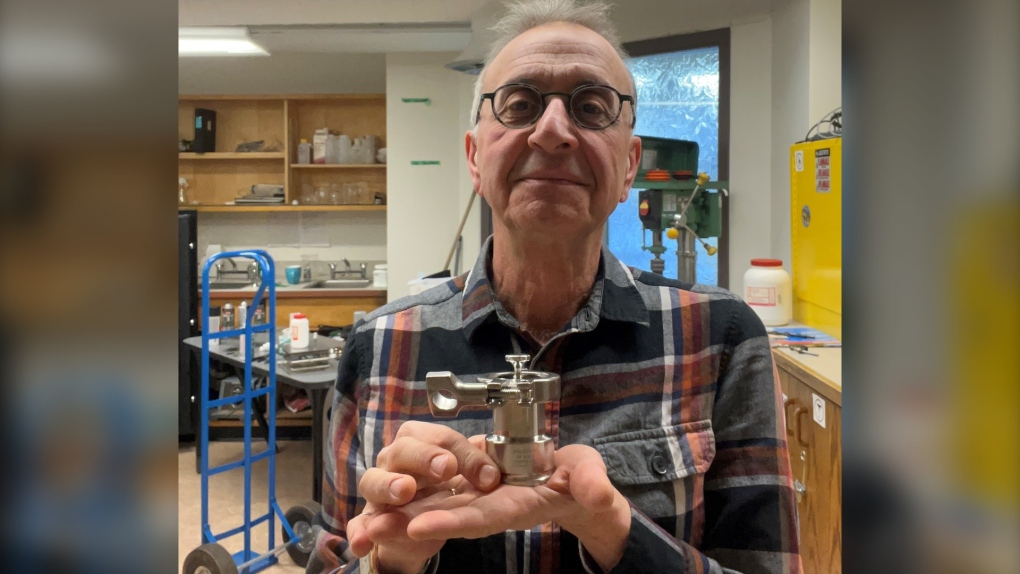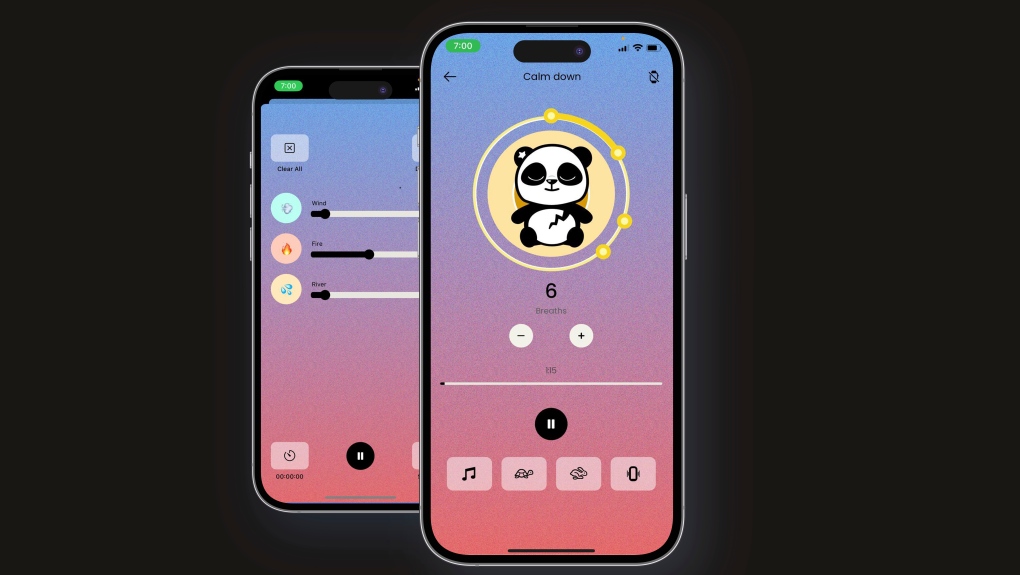A sliver of a 4.5 billion-year-old asteroid has made its way from the stars to a laboratory here in Winnipeg – all part of a NASA space mission to learn about the origins of life on Earth.
The sliver is a ‘pristine sample’ of an asteroid called Bennu, collected during the 2016 OSIRIS-Rex mission. One of the goals of the mission was to collect an uncontaminated sample of an asteroid to learn about its chemical makeup in relation to the origins of life on Earth.
The spacecraft returned to Earth in September 2023, dropping its sample in the Utah desert before returning to space for another mission.
Just a few days ago, University of Winnipeg (U of W) geography professor Ed Cloutis received a sliver of the asteroid sample. It’s the culmination of a decade of work for Cloutis, who got involved in the space mission a few years before it launched.
“It’s really exciting that the mission worked and all that work that we put into making the mission a success finally paid off,” Cloutis told CTV News. “I’m really, really happy about that.”
(Source: University of Winnipeg)
The asteroid sliver arrived sealed up in nitrogen, ready to be measured in a quarantine-controlled environment. Cloutis will analyze it using spectroscopy, which he likens to a really high-end digital camera.
“You look at the sample and see what colours it has. So when we talk about colours, we mean not just how it appears to our eye, but how it appears say if you hit it with infrared light or ultraviolet light,” he said.
Those colours can tell Cloutis and his team what the sample is made of. Experts estimate the asteroid is about 4.5 billion-years-old and has been sitting in a deep freeze in space since the formation of the solar system.
“Analyzing this can tell us a lot about how did the solar system come to be, whether these kinds of asteroids delivered organic molecules to Earth to help kick-start life on Earth,” Cloutis said.
The analysis will be non-destructive, meaning the sample will stay pristine and be available for use again down the road. The sample will then move on to another team of researchers.
– With files from Charles Lefebvre
 (Source: University of Winnipeg)
(Source: University of Winnipeg)




